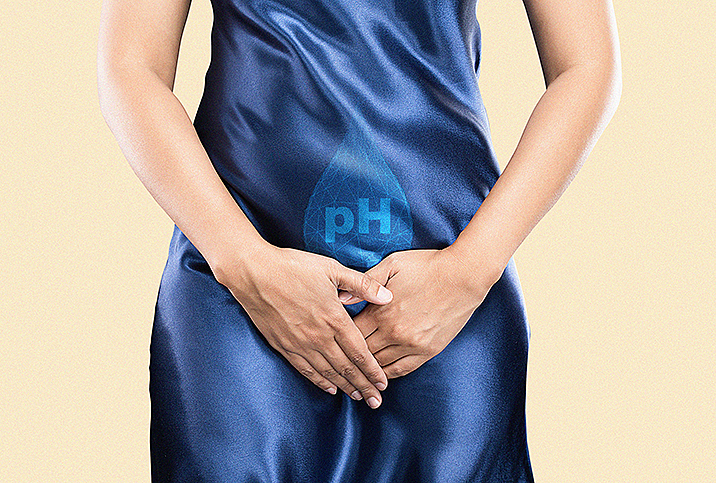FDA Approves New One-Dose Treatment for Bacterial Vaginosis

Sufferers of bacterial vaginosis may be happy to hear that treatment options have recently advanced. Don't like taking pills or have a hard time remembering to finish your antibiotic pack? Well, there may be a new option: a one-dose antibiotic gel.
In December 2021, Xaciato (clindamycin phosphate) vaginal gel was approved by the Food and Drug Administration (FDA) for use in the United States for the treatment of bacterial vaginosis (BV). Xaciato is a lincosamide antibiotic, a type of antibiotic used to kill bacteria that cause certain infections, such as some skin and respiratory infections. As a gel-based, one-course treatment, Xaciato is a much more convenient medication than a typical course of antibiotics.
Bacterial vaginosis is the most common vaginal condition, with about 21.2 million women ages 14 through 49 affected in the United States.
"BV infection is associated with odor and foul-smelling discharge," said Kecia Gaither, M.D., who is double board-certified in OB-GYN and maternal-fetal medicine, and director of perinatal services at NYC Health + Hospitals/Lincoln in the Bronx in New York City.
Bacterial vaginosis occurs when the vagina has too much "bad" bacteria and not enough good bacteria. It's not technically a sexually transmitted infection (STI), but you have a higher chance of getting BV if you are sexually active. BV can also cause burning and itching in and around the vagina.
"It's not a benign infection," said David M. Kimble, M.D., a board-certified urogynecologist at the Kimble Center for Intimate Cosmetic Surgery in Pasadena, California. "It can lead to preterm birth and high risk of miscarriage in pregnancy."
Daré Bioscience, the San Diego-based maker of Xaciato, expects its medication to launch in 2022, so there is limited information on its effectiveness. However, Daré reported positive results from the phase 3 randomized controlled clinical trial.
To take Xaciato, you use one applicatorful one time intravaginally at any time of day. Each dose contains 100 milligrams of clindamycin.
The perks of a one-and-done gel
The gold standard for treating BV has always been metronidazole, according to Kimble. Clindamycin is used by people who can't take metronidazole or when it isn't as effective. He listed four forms of clindamycin: oral, vaginal suppository, cream and this newest type, gel.
"There is a need for more efficacious and convenient treatment options, particularly products with improved clinical outcomes for not only the newly diagnosed women, but importantly, also for the women who experience multiple episodes of bacterial vaginosis each year," stated David Friend, Ph.D., Daré's chief scientific officer, in a press release.
Traditionally, BV is treated with a five- to seven-day course of antibiotics. If you don't take the full course of medication, BV can return. There is one other exception to that course: Xaciato's main competitor, Clindesse. Kimble said it's similar to Xaciato, a one-day dose given vaginally. The difference is Clindesse is a cream, and Xaciato is a gel.
Traditionally, BV is treated with a five- to seven-day course of antibiotics, which can return if not completed.
There are properties in both the cream and the gel that make them bioadhesive, meaning they cling to the cells of the vagina, Kimble explained.
"So it's not as if you're going to put the cream in and then tomorrow morning, it all comes out," he said. "Even though it's a one-day treatment, it's going to stay there for several days."
But creams, even a one-time dose, are still messy. Gel is an easier method of administering, and this is probably the premise behind Daré producing a gel—for ease and comfort, Kimble stated.
Xaciato is not the right choice for all BV infections, though.
"[Xaciato] would be great for somebody who has a relatively subclinical infection," Kimble said.
In other words, the infection is mild. Xaciato hasn't been studied in people who have more severe or frequent BV infections.
Kimble also stated Xaciato can be a good treatment option if a person can't or won't take a seven-day treatment course of clindamycin.
Possible interactions and side effects
You shouldn't use Xaciato if you have an allergy to clindamycin or lincomycin. Xaciato is only approved for people ages 12 and older, so it shouldn't be given to a pediatric patient. Common reactions during clinical trials were vulvovaginal candidiasis (vaginal yeast infections) and vulvar and/or vaginal pain.
Xaciato might enhance the effects of neuromuscular blocking agents. These are medications normally given during surgery to prevent muscle movement, so if you have an upcoming surgery, talk with your healthcare provider about other treatment options for BV.
During treatment and for seven days after, you shouldn't use polyurethane condoms because they may not be as effective in preventing pregnancy or STIs.
"[Xaciato] hasn't been studied extensively in pregnancy," Gaither said.
However, according to the prescribing information for Xaciato, the risk to a fetus is probably low given that this medication is administered through the vagina.
"Xaciato has decreased serum levels and systemic exposure of clindamycin compared to an oral or intravenous dose of clindamycin," Gaither explained.
This means that since you put the gel right into your vagina, it should stay there, unlike clindamycin pills which circulate through your bloodstream. This is likely also true for breastmilk absorption, because Xaciato stays localized to the vagina.
Your best bet, Gaither concluded, is to see your healthcare provider for treatment. Some BV infections go away on their own without medication, but it's always best to play it safe and talk to your doctor. They can help you decide the best course of medications to treat BV.


















